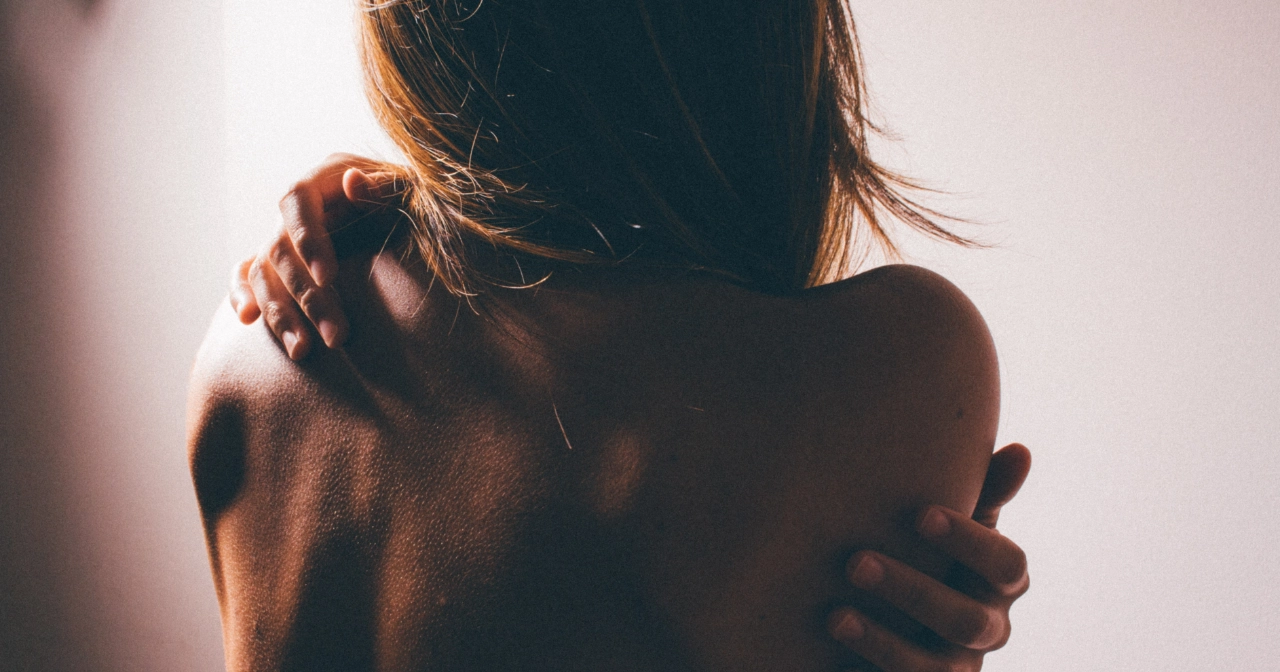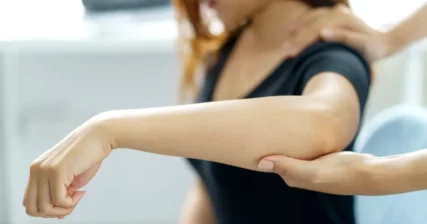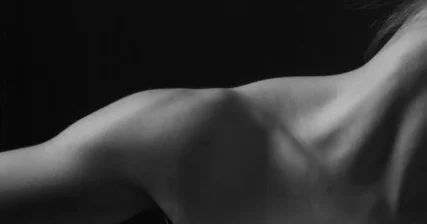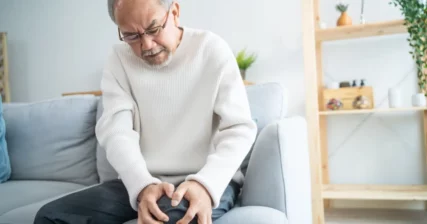Listen on: Apple Podcasts | Spotify
Have you ever seen one of those videos of somebody in India lying on a bed of nails, with an expression on their face like they’re lying on a Sleep Number bed?
I’ve never doubted that they seem comfortable, but I also haven’t been interested in trying it out for myself. At least not until Vanessa ordered us a Pranamat.
From a distance, the Pranamat looks like pillows you’d find in a yoga studio. But the first time you rest your bare skin upon them with some added pressure, you’ll be sure you’re experiencing a bed of nails.
In a way, you are. But it isn’t torture; it’s therapeutic.
I’ll explain the science behind Mechanical Needle Stimulation first, and then delve into the details on the actual Pranamat.
We liked it so much that we signed up for their ambassador program. If you’d like to support the content on this site and the Nikkola Newsletter and also want to try the Pranamat out for yourself, use the links here to place your order.
As a thank-you, you’ll get 15% off any of the sets you choose.
Try the Pranamat for 30 Days, Risk Free
Ready to try out the Pranamat ECO? You won’t be disappointed! Order yours and take advantage of the 30-day money-back guarantee, plus 15% off any of the sets you choose.
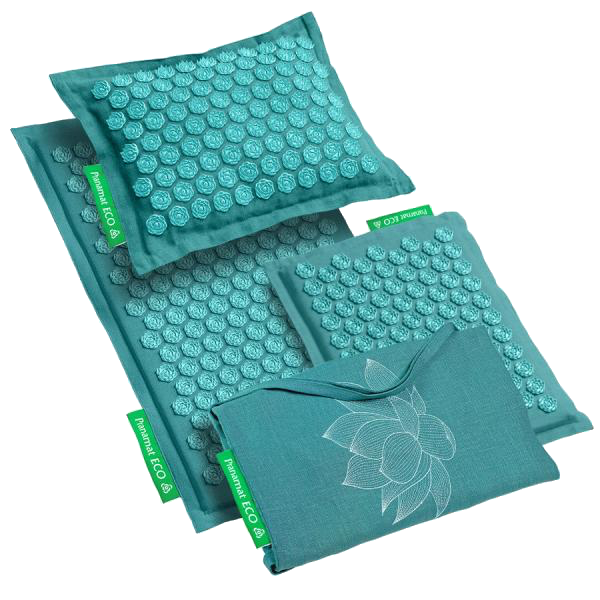
What is Mechanical Needle Stimulation?
Mechanical needle stimulation is a form of acupressure. You might ask, what is acupressure? I’ll start there.
Acupressure is a way of applying pressure to specific points throughout the body called meridians. You might have heard that term, but it isn’t used often in Western medicine. Chinese medicine suggests that meridians form a network of energy pathways throughout your body. If a pathway is blocked, it can lead to various symptoms, including pain.
Acupuncture is the traditional and possibly most effective way of improving energy flow. It played a significant role in my spinal cord injury recovery. While acupuncture could be best, it isn’t always practical. You might not even have a Chinese medicine practitioner near you, even if you wanted to get acupuncture.
Acupressure triggers the meridians, albeit to a lesser extent than acupuncture, without inserting needles into the skin.1Lee, Eun Jin, and Susan K Frazier. “The efficacy of acupressure for symptom management: a systematic review.” Journal of pain and symptom management vol. 42,4 (2011): 589-603. doi:10.1016/j.jpainsymman.2011.01.007 The pressure is just applied to the skin. But to stimulate the meridians, you still need to apply pressure with a fine point of contact similar to a needle. Though lying on a bed of nails could do that, the risks for the average person wouldn’t be worth it.
This concept led a Russian by the name of Ivan Kuznetzov to develop a rudimentary acupressure device in the early 1980s. He created a rubber mat with 1500 stainless steel office pins sticking out of it, spaced about two inches apart. The Institute of Experimental Surgery tested it on patients with much success. Russian television eventually showed a documentary on the device, highlighting that people experienced pain relief from a variety of conditions as well as improved respiratory function. Sadly, the pain-relieving device wasn’t studied any further, and didn’t seem to gain attention outside of Russia.2Olsson, Erik M G, and Bo von Schéele. “Relaxing on a bed of nails: an exploratory study of the effects on the autonomic, cardiovascular, and respiratory systems, and saliva cortisol.” Journal of alternative and complementary medicine (New York, N.Y.) vol. 17,1 (2011): 5-12. doi:10.1089/acm.2010.0135
The Science
Western medicine has yet to be able to explain why acupressure, acupuncture, or Chinese medicine in general, works so well. So, if your usual healthcare practitioner dismisses the benefits, that could be why.
One paper proposed how it could work:3Zilberter, Tanya. Reflexo-Therapy With Mechanical Cutaneous Stimulation: Pilot Study. 1999.
skin stimulation, even not necessarily as accurate as in acupuncture, but intensive enough, does at least two things:
Tanya Zilberter
- Provides additional unspecific sensory input to the body’s self-diagnostic center in the central nervous system thus amplifying insufficient signals from diseased internal organs.
- Coordinates the body’s functions through the cascade of physiological regulators triggered by endorphins which in their turn are being released by reflexes from the skin.
Though there’s plenty of debate as to how it might work, there’s clear evidence that it does work to relieve pain related to:4Chen, Ya-Wen, and Hsiu-Hung Wang. “The effectiveness of acupressure on relieving pain: a systematic review.” Pain management nursing : official journal of the American Society of Pain Management Nurses vol. 15,2 (2014): 539-50. doi:10.1016/j.pmn.2012.12.005
- dysmenorrhea
- labor
- headache
- trauma
- regular low back pain
Research also shows that it can reduce anxiety, likely because it reduces sympathetic nervous system activation.5Au, Doreen W H et al. “Effects of acupressure on anxiety: a systematic review and meta-analysis.” Acupuncture in medicine : journal of the British Medical Acupuncture Society vol. 33,5 (2015): 353-9. doi:10.1136/acupmed-2014-010720
While there have been many studies done using different forms of acupressure, researchers from the Experimental Medicine Institute together with the University Hospital at the University of Latvia completed research specifically using the Pranamat. The research involved both laboratory measurements and patient feedback.
The study participants used the Pranamat for 20 minutes per day for 30 days. The researchers found that the participants:
- Increased the intensity of local microcirculation
- Increased local metabolic processes within treated tissues
- Reduced inflammation in the joints and the muscles
- Increased production of beta-endorphins (powerful natural painkillers)
They also experienced the following subjective changes:
- 70% of participants reported reduced low back pain
- 97% reported their back muscles felt more relaxed
- 80% reported a reduction in or absence of headaches
- 100% said they felt less tired and apathetic
- 70% reported improved mood, energy, and alertness
- 90% reported improved stress resilience
- 95% reported an improvement in sleep quality
Whether you’re a skeptic or not, you have to admit those results are impressive, especially when you consider they carry no risk. That motivated Vanessa to order it for us. Also, since the study above was completed over 30 days, Pranamat decided to make their guarantee based on the same timeline. According to the research, if you use it each day, you should notice at least one of the benefits above.
Based on the scientific and their anecdotal evidence, Pranamat claims their product will help those dealing with:
- Back pain
- Migraines and other headaches
- Cellulite (this is due to the increased circulation in the area treated)
- Sleep debt
- Anxiety
- Fatigue
- Leg pain
- Tension and stress
- Pinched nerves
- Symptoms of fibromyalgia
My Skepticism
Vanessa doesn’t buy into gimmicks. She’s not easily fooled and is cautious about how she spends our money. However, I still consider new health-related purchases with a fair amount of skepticism.
When I saw the Pranamat ECO, I had a similar reaction as when she received her first order of essential oils. You can read more about that story here: Essential Oils For Fitness: Research, Anecdotal Evidence, Experimentation.
I also saw that most of the people promoting it were in the yoga world. It’s not that I’m against yoga. I know it’s beneficial in addition to an intense strength training program and a high-protein, animal-containing diet. So, the fact that there weren’t many strength and conditioning people promoting it made me pause. But then, I figured, like me, most of them just hadn’t been exposed to it yet.
I’m always willing to try something new for the sake of improved health and fitness. And as you can see from what I’ve already written, there’s credible scientific evidence to support its use.
I’ve used it enough now to feel confident writing about it and recommending it to others. The first time I tried it on my feet, we were playing our morning card game. I took off my socks and placed my feet squarely on the pillow. I kept them in the same position for about 30 minutes. For about the next four hours, my feet felt hot. Not to the touch, but as I walked or sat, they felt like I’d applied a blend of hot essential oils such as Deep Relief to my feet. I love the relaxing and invigorating feeling on my feet. I’m using it right now as I write this article.
I also like the fact that I can use this acupressure tool while I’m doing something else. I don’t need to take extra time out of my day to use it.
The bottom line is this skeptic is impressed. I wouldn’t write about it or recommend it if I wasn’t. The only issue is that Vanessa bought just one. It won’t be long, and we’ll own a his and hers.
Try the Pranamat for 30 Days, Risk Free
Ready to try out the Pranamat ECO? You won’t be disappointed! Order yours and take advantage of the 30-day money-back guarantee, plus 15% off any of the sets you choose.

Photo by Romina Farías on Unsplash
